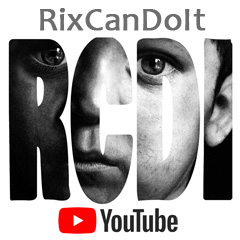
Greetings Fellow CanDoIt! IMPORTANT!!! PLEASE READ FIRST!
Thank you for your purchase. If you have any issues, please email me at RixCanDoIt@gmail.com. IMPORTANT!!! PLEASE DO NOT ASK YOUR HELP QUESTIONS IN THE COMMENTS OF MY VIDEOS. That is not how to get help and may discourage others from trying the paper for no fault of the paper itself. Any issue can be resolved with proper application.
RECOMMENDED: WATCH SEVERAL OF MY VIDEOS!!!
Due to the nature of paper when moistened and the coating used, you may notice some minor edge wrinkles and/or staining. THIS WILL NOT AFFECT THE TRANSFER.
Make sure you do not get the coating side wet. This can be with water or any other spray/liquid.
TIP: For some applications, you may wish to protect the coating BEFORE printing on it, such as with Krylon Clear coat spray. When doing so, spray from a good distance so that the spray lands on the paper without wetting it (sort of like flash drying the spray as you apply it). Once you’ve covered it well with the spray (multiple applications to prevent wetting the paper with a single heavy spray), you don’t have to worry about smearing or wrinkling when using excessive glue/gel Medium.
Print only on the side that is not marked “Print Other Side”.
Use a LASER PRINTER ONLY. Avoid printing within ½ inch from the edge of the paper border for best results.
Use glue that can glue regular paper well to the surface. Always TEST your glue and application by printing a few ‘small’ images and transferring them. If successful, only then do larger transfers.
Important: Use enough glue (Ex: Matte Gel Medium, Mod Podge, etc.) so it will still be moist, not dry or tacky (almost dry) when applying the transfer. Avoid using too much though, which will wrinkle the paper and can cause smearing of the image. If you use the spray ‘tip’ provided above, you are free to use more glue to ensure full coverage and that it won’t dry fast on you.
Ensure good contact using a brayer to remove air bubbles, wrinkles, and excess glue. You want good contact. Be careful not to move the paper around when gluing. DRY COMPLETELY. Use a heat gun or hair dryer to speed up the drying (a few minutes) or let air dry for several hours.
To remove paper, moisten with water and allow soaking in for at least a minute. Remove excess moisture with a clean dry paper towel then.
If you experience any missing areas (ie. spots) where the image did not transfer but remained on the paper itself, this is due to those areas NOT being properly glued to the surface. FACT: If it was glued, you would not be able to peel it off. As to why those areas may not have been glued, this can be caused by missing glue in those areas, areas not completely dried, or poor contact of paper to surface (air bubbles, poor pressing, uneven or depressed areas preventing good contact, etc.
How to Glue the Image
Many of my original videos demonstrate using Gel Medium to act like a glue without being too wet like regular glue. Since ‘wetness’ is what releases the image from the paper, an unprotected printed image can be affected by too wet of a glue. This is why the videos suggest using only enough that it is still wet, but not too wet, when time to apply the paper to surface. Too wet can cause smearing, the paper sliding around (not good), or wrinkling (really bad).
To avoid this, my preferred method is to use a light coating of Krylon Crystal Clear on the printed image (applied from a distance so as to not to ‘wet’ the paper). Once dried (usually in less than a minute), the image is then protected from the wetness of your glue and you are free to use ‘wetter’ glues, like Mod Podge.
The spray coating also allows you the freedom in using more glue without smearing the image or wrinkling the paper. It’s my go to way now and recommended for most projects.
Note: If you use Krylon Crystal Clear, which is an ‘acrylic’ coating, do NOT use Acrylic Gel Medium, which is what Liquitex is. It will react with the spray coating and you’ll smear the image.